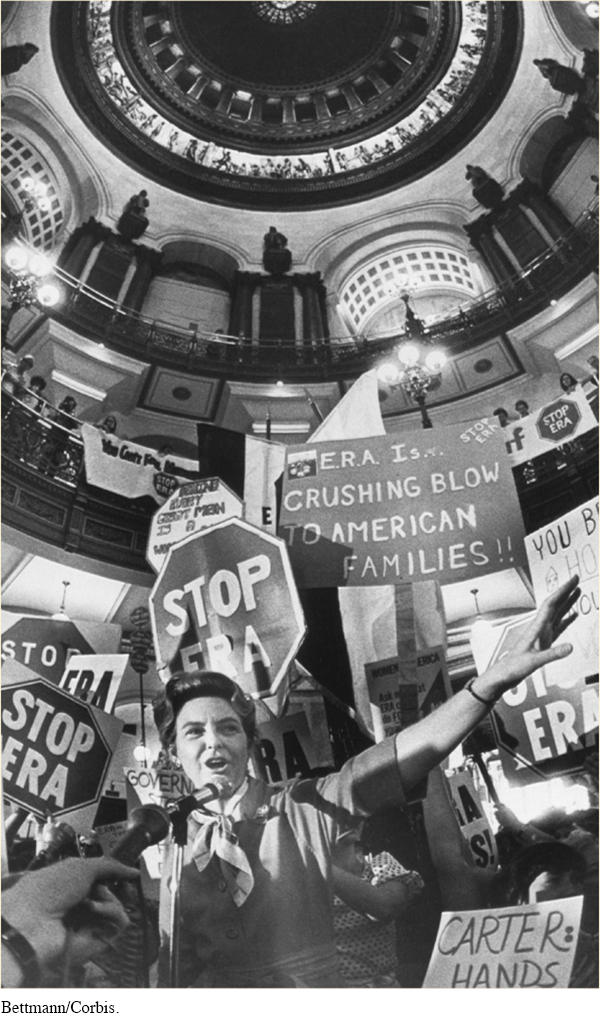The American Promise: Printed Page 882
The American Promise: A Concise History: Printed Page 914
MAKING HISTORICAL ARGUMENTS
Why Did the ERA Fail?
The proposed Equal Rights Amendment to the U.S. Constitution guaranteed that “equality of rights under the law shall not be denied or abridged by the United States or by any State on account of sex.” Two more short sections gave Congress enforcement powers and provided that the ERA would take effect two years after ratification. By the 1970s, it had become the symbol of the women’s movement, and the controversy it sparked revealed profound differences in beliefs and values among Americans.
The National Woman’s Party, a militant suffrage organization that had helped win the vote for women in 1920, first proposed an equal rights amendment to the Constitution in 1923. It won little support, however, before the resurgence of feminism in the late 1960s, when the National Organization for Women and other women’s groups made the ERA a key objective.
Both houses of Congress passed the ERA in March 1972 by overwhelming margins, 354–
The ERA encountered well-
Anti-
Schlafly and other conservatives skillfully mobilized women who saw their traditional roles threatened. In October 1972, she established a national movement called STOP (Stop Taking Our Privileges) ERA, whose members deluged legislators with letters and lobbied them personally in state capitols. In Illinois, they gave lawmakers apple pies with notes that read, “My heart and my hand went into this dough / For the sake of the family please vote ‘no.’” Opponents also brought baby girls to the legislature wearing signs that pleaded, “Please don’t draft me.”
ERA opponents had an easier task than supporters because the framers of the Constitution had stacked the odds against revision. All opponents had to do was convince a minority of legislators in a minority of states to preserve the status quo. In addition, unlike their suffragist predecessors, pro-
The very gains that feminists made in the 1960s and 1970s also worked against ratification. Congress had banned sex discrimination in employment, education, and other areas, and the Supreme Court had struck down several discriminatory laws, thus making it harder for ERA advocates to demonstrate the urgency of constitutional revision.
The ERA failed because a handful of men in a handful of state legislatures voted against it. The shift of only a few votes in states such as Illinois and North Carolina would have meant ratification. Schlafly’s forces played a key role in the defeat because men could vote no and take cover behind the many women who opposed it. And those women proved willing to commit time, energy, and money to block ratification because they were convinced that the ERA threatened their very way of life.
Feminists did not leave the ERA battle empty-

Questions for Analysis
Summarize the Argument: What different values were expressed by opponents and supporters of the ERA? What did both sides gain from the campaigns?
Analyze the Evidence: What structural features of the U.S. Constitution made ratification difficult for ERA advocates? What other specific obstacles prevented ERA’s passage?
Consider the Context: Why were woman suffrage supporters more successful than ERA advocates in gaining a constitutional amendment?